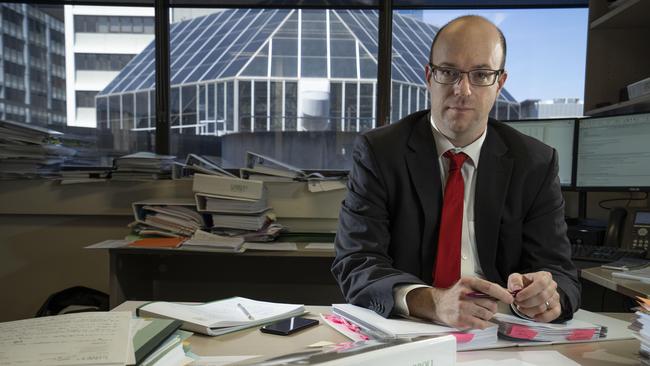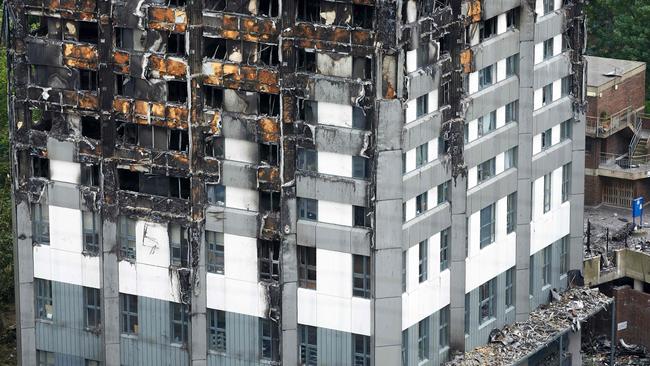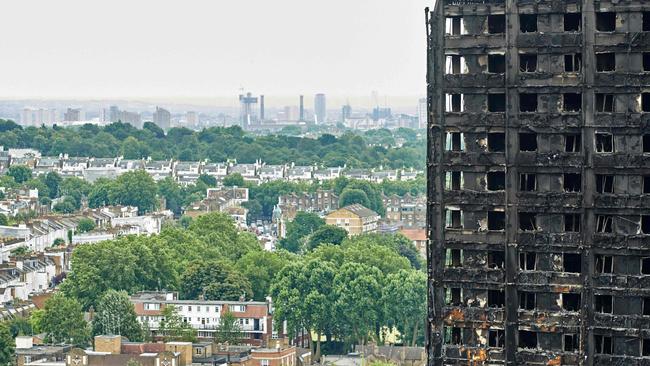Sydney council identifies 63 buildings with combustible cladding in new policy
A total of 63 buildings have been identified across Sydney’s north west to contain potentially combustible cladding. However, residents and ratepayers will not be able to access the register that identifies the buildings.

Hills Shire
Don't miss out on the headlines from Hills Shire. Followed categories will be added to My News.
- Law firm questions NSW Government cladding taskforce
- Sydney councils fail to respond to taskforce cladding
- Hills Shire council push for better fire safety precautions
- Atlas building in Norwest contains potentially combustible cladding
A total of 63 buildings have been identified by The Hills Shire Council to potentially include combustible cladding on external walls over the past twelve months.
The long list of buildings, which have caught the eye of council staff, sparked the introduction of a new external combustible cladding policy — with Hills councillors being some of the first to roll out region-wide regulation across the state.
However, access to the register for concerned residents or businesses owners has been restricted, with the NSW Government announcing there was no intention to make the data available to the public.

This came at the same time The Hills Shire Council refused access to local data obtained on the 63 buildings identified by council staff, citing confidentiality, despite The Hills Shire Times arguing the information was public health and safety.
The Hills Shire Council rolled out the new policy to prevent the devastation of the 2017 Grenfell Tower inferno — which killed 72 people and hospitalised a further 74.
Hills Shire Mayor Michelle Byrne said the policy has been developed to “safeguard occupants in the event of a fire in buildings with external combustible cladding”.

“It outlines the scope and criteria that council officers will consider when determining an appropriate course of action when a building is identified to contain external combustible cladding,” she said.
Council regulates matters relating to fire safety in buildings across The Hills, meaning this new policy will work to “ensure a consistent, reasonable and transparent approach is adopted when assessing buildings with external combustible cladding”, according to Cr Byrne.
According to council documents, the policy will provide the framework necessary to develop an inspection program.

“The criteria … will be considered when determining an appropriate course of action and develop an appropriate safety benchmark,” the document said.
“The presence of external combustible cladding does not automatically deem the provisions for fire safety inadequate or the building unsafe.”
Since January 2015, the NSW Government has been working on specific measures to address the fire safety risks associated with external wall cladding, long before dozens were killed in the Grenfell Tower fire.
A total of 178,000 buildings in NSW have been audited during fire safety inspections, with more than 1000 buildings identified to contain potentially combustible cladding across the state.

A NSW Cladding Taskforce report said information about registered buildings will be made available to councils and State Government agencies.
“It is important to note that the list is not a list of high-risk buildings but rather buildings that may require further investigation by local authorities,” the report said.
“It is also important to remember that the presence of combustible cladding on a building does not mean it is a fire safety risk.
“Fire safety risks depend on the amount of combustible cladding and its configuration, as well as the fire safety provisions within the building.”
In November, The Times revealed several buildings across The Hills had been identified to potentially contain combustible cladding.
IN OTHER NEWS

